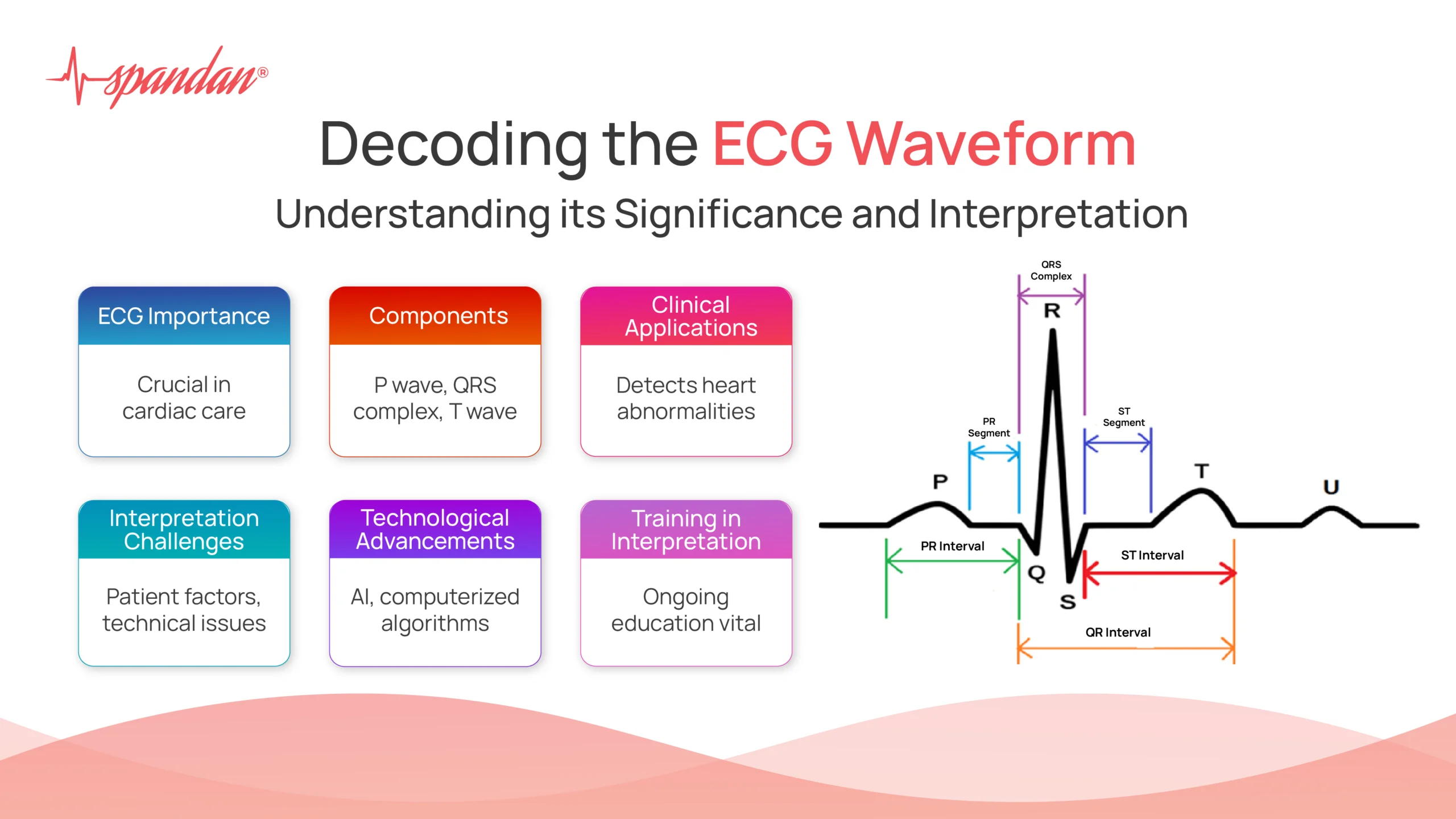
Author:- Mr. Ritesh Sharma
An electrocardiogram using an ECG machine is one of the most important diagnostic tests in the field of cardiac care. This test is capable of identifying heart abnormalities ranging from something fleeting like heart palpitations to something persistent like cardiac arrhythmias. Now, you must be aware that the test reports for an ECG test consist of an ECG waveform. The ECG waveform are P-wave, QRS complex, and T-wave.
These ECG waveforms sometimes showcase an abnormal ECG illustrating P-wave ECG abnormalities, QRS complex abnormalities, and T-wave abnormalities. This non-invasive test records the heart’s rhythm and electrical activity, aiding in the diagnosis and monitoring of various cardiac conditions. Understanding how to interpret an ECG waveform is essential for healthcare professionals, as it allows for timely intervention and management of heart-related issues.
What is an ECG Waveform?
An ECG waveform is a graphical representation of the heart’s electrical activity over time. It consists of several key components that reflect different phases of the cardiac cycle. These components include the P wave, QRS complex, and T wave, each representing specific electrical events within the heart.
The P wave indicates atrial depolarization, which triggers atrial contraction. Following this, the QRS complex represents ventricular depolarization and precedes ventricular contraction. Finally, the T wave corresponds to ventricular repolarization, marking the recovery phase of the ventricles before the next heartbeat.
Clinical Applications of ECG Waveform Analysis
ECG waveform analysis is integral to diagnosing a wide range of cardiac conditions. By examining the shape, duration, and intervals between components of the waveform, clinicians can detect abnormalities such as arrhythmias, ischemia, and conduction disorders. For instance, a prolonged QT interval may indicate an increased risk of sudden cardiac death, while ST segment elevation can suggest myocardial infarction (heart attack).
Regular monitoring of ECG waveforms is also crucial for patients with known heart conditions or those undergoing cardiac procedures. Changes in the waveform over time can provide valuable insights into the effectiveness of treatment or the progression of disease.
Interpretation Challenges and Considerations
While ECG waveform interpretation is typically straightforward for routine cases, certain factors can complicate analysis. These include patient factors such as age, medications, and electrolyte imbalances, as well as technical issues like improper electrode placement or artifact interference.
Moreover, understanding the context in which an ECG is performed is essential. Clinical history, symptoms reported by the patient, and concurrent diagnostic tests all contribute to accurate interpretation. A holistic approach ensures that abnormalities in the ECG waveform are appropriately evaluated and managed.
Technological Advancements in ECG Analysis
Recent technological advancements have revolutionized ECG analysis. Computerized algorithms now assist healthcare professionals in identifying subtle abnormalities and patterns that may not be immediately apparent. This computer-aided analysis enhances diagnostic accuracy and efficiency, ultimately improving patient outcomes.
Training and Education in ECG Interpretation
Proficiency in ECG interpretation requires specialized training and ongoing education. Healthcare professionals, including physicians, nurses, and technicians, undergo rigorous instruction to master the nuances of waveform analysis. Continuous professional development ensures that practitioners stay abreast of evolving guidelines and technological advancements, refining their diagnostic skills and optimizing patient care.
Future Directions and Innovations
Looking ahead, the future of ECG waveform analysis holds promise for further advancements. Innovations in wearable ECG monitoring devices and telemedicine capabilities are expanding access to cardiac monitoring, particularly in remote or underserved areas. Additionally, integration with artificial intelligence (AI) continues to enhance the accuracy and efficiency of waveform interpretation, potentially transforming how cardiac conditions are diagnosed and managed globally.
In conclusion, the ECG waveform is a cornerstone of cardiovascular diagnostics, providing invaluable insights into the heart’s electrical activity. Its graphical representation enables clinicians to detect, diagnose, and monitor a wide range of cardiac conditions effectively. As technology evolves and our understanding deepens, the role of ECG waveform analysis in clinical practice continues to expand, underscoring its significance in modern medicine.
By mastering the interpretation of the ECG waveform, healthcare professionals empower themselves to make informed clinical decisions, ultimately improving patient outcomes and quality of life. Understanding and leveraging the intricacies of the ECG waveform is not just a skill but a responsibility—a responsibility to ensure accurate diagnosis and optimal care for every patient.
In essence, the ECG waveform is more than a graph; it is a lifeline—a lifeline that guides clinicians in safeguarding the heart’s rhythm and health, one beat at a time.




